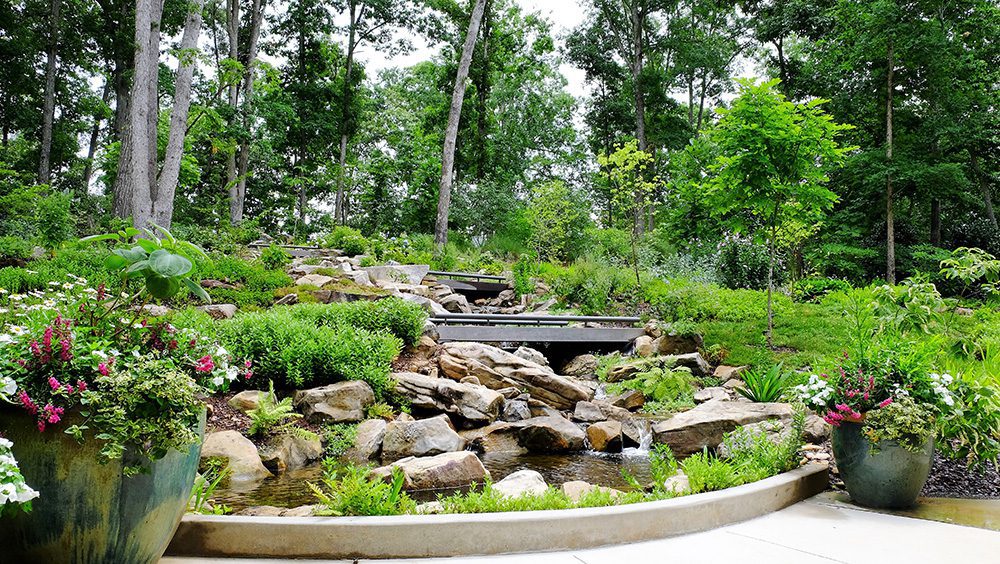
Location: Gainesville, GA
Project Scope: Installation of 4,000 tons of subgrade, gravel and topsoil, a 400,000 LF irrigation system, 2,900 shrubs, 19,000 perennials/annuals/groundcover, and 625 trees, stone curb, concrete flatwork, concrete walls, pavers and water features.
Installed By: Georgia Landscape Construction Branch
Industry Awards Won: National Association of Landscape Professionals (NALP) 2017 Grand Award, Landscape Contractors Association (LCA) 2017 Grand Award
Site Description: The Atlanta Botanical Gardens, Gainesville is a 168-acre property that was given by philanthropists to preserve the acreage as greenspace. Approximately 12 acres were developed and they include five acres of horticulturally intense and botanically significant display gardens, two miles of walking trails, a 2000-seat amphitheater, a model train garden and a visitor center.
The overall design intent of this project was to showcase the woodland regions of the southeast with a richly layered weaving of canopy trees, shrubs, perennials and bulbs. The site was designed to make the space feel larger and more mature than it was. There were many existing trees that had to be planned around and incorporated into the design. Meandering trails were created to showcase impressive existing trees and avoid damaging root systems. Special attention was paid to creating unique, seasonal and more focused experiences throughout the garden—with an eye to crafting areas that could be visited multiple times throughout the year and to building rentable event spaces. Myriad specimen plants combined with countless accent clusters ultimately helped to create the feel of a well-established “secret garden” experience.
Challenges & Solutions: Accessibility was a challenge—all soil, shrubs, trees, annuals, perennials and groundcover going to designated tree save areas at the property’s rear could only be transported on a few paved areas using bobcats and ball carts to a certain point on the property. Materials were then transferred to wheelbarrows and Georgia buggies or hand carried to specified areas. Additionally, a 60’ remote controlled tele belt was used to transfer subgrade stone to areas efficiently, taking nearly three days to complete.
Additional challenges included Georgia clay soils, which turns into mud when it rains, requiring significant focus on soil amendments and erosion control. All planting areas were excavated down 18” and back filled with a mixture of amended top soil. During the initial grading, soil was harvested and screened—eliminating heavy roots, rocks and leaves—to maintain the same nutrient biome. These were then combined with an exact mixture of imported top soil to enable better water absorption, thus reducing soil compaction and erosion issues.
Photos & Descriptions:
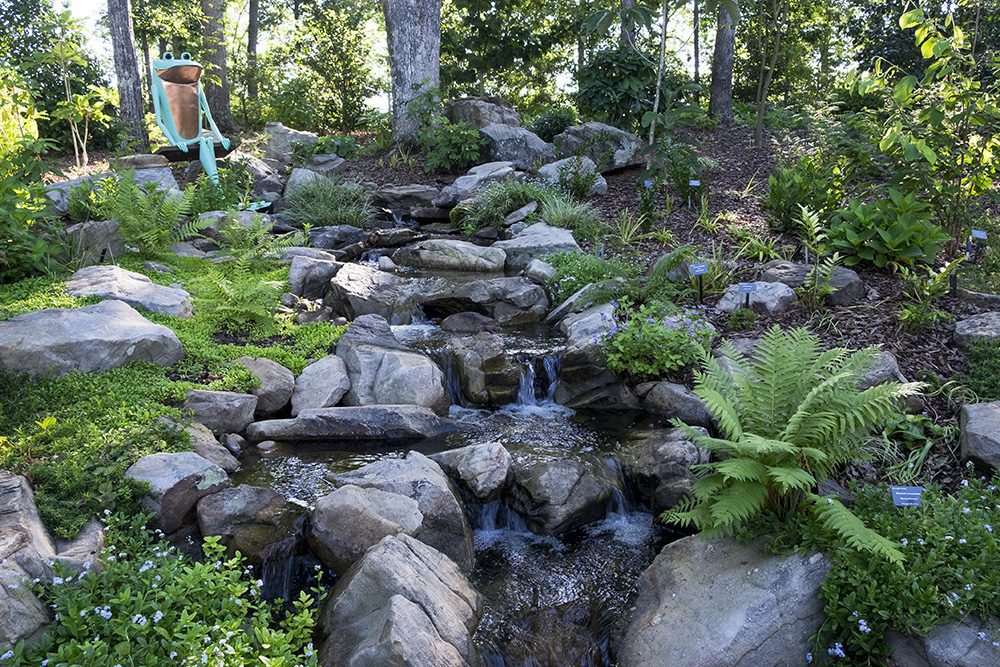
Approximately 25% of the time onsite was spent with approximately 20 people hand- carrying and installing six acres (like pictured here) of plant material in designated tree save areas.
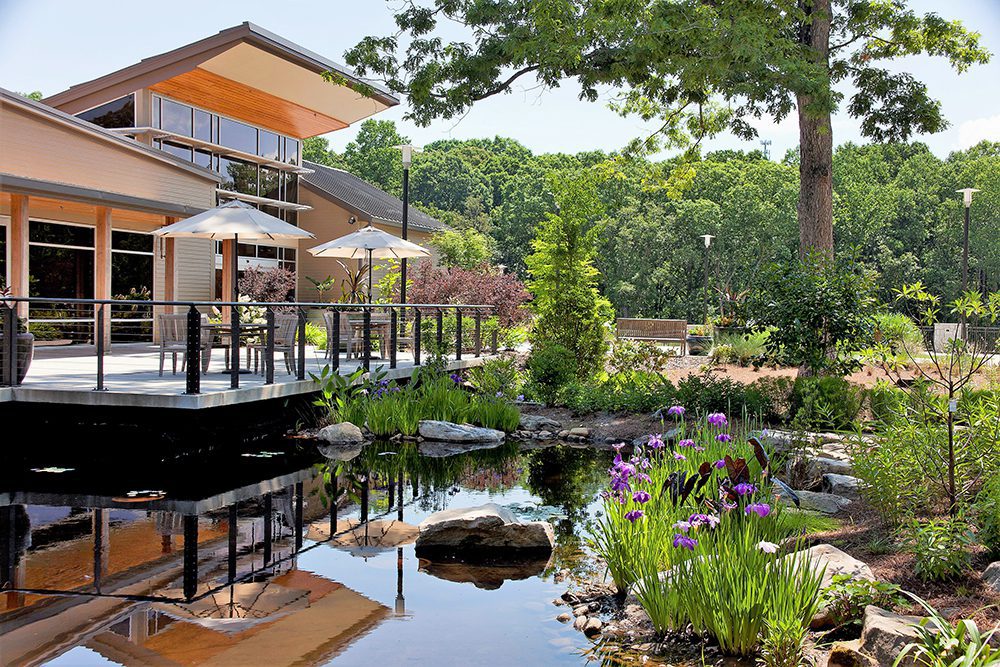
Photo Credit: Larry Griffeth
The visitor’s center is deferential to the landscape (made with wood siding and metal roof) and was placed strategically to act as a gateway to the magnificent woodland.
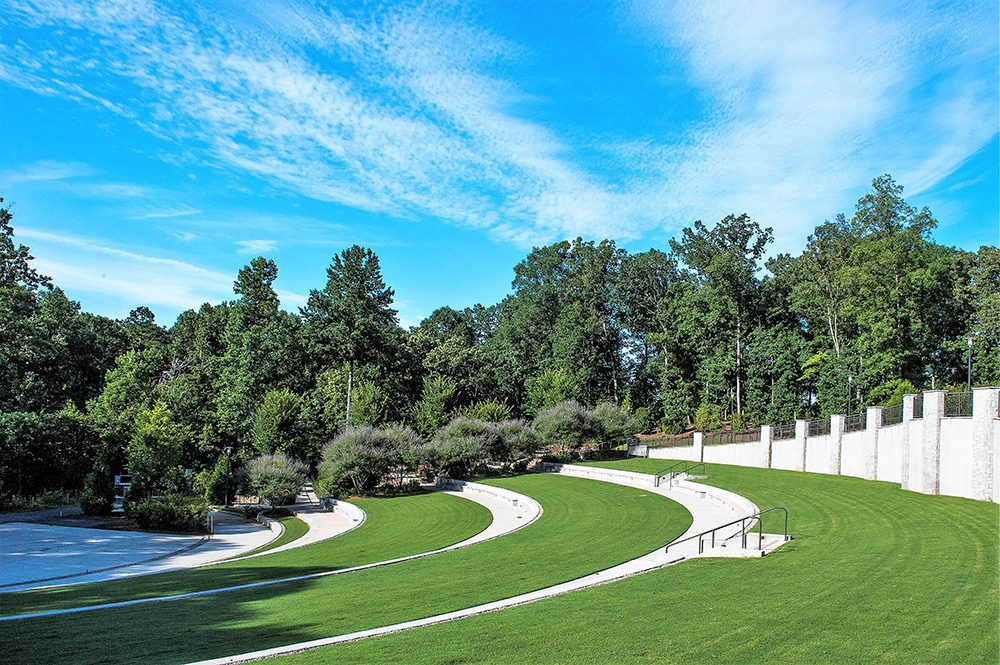
Stone aggregate, drainage fabric, and drainage pipe tie into the site’s irrigation system, which includes a 30,000 gallon cistern that collects and distributes rainwater back into the site’s many planting beds and lawn areas, like the amphitheater seen here. Seven months before the site opened to the public, a soft opening for investors and donors necessitated redirecting crews’ attention to the event lawn and visitor center, which took them away from their original schedule.
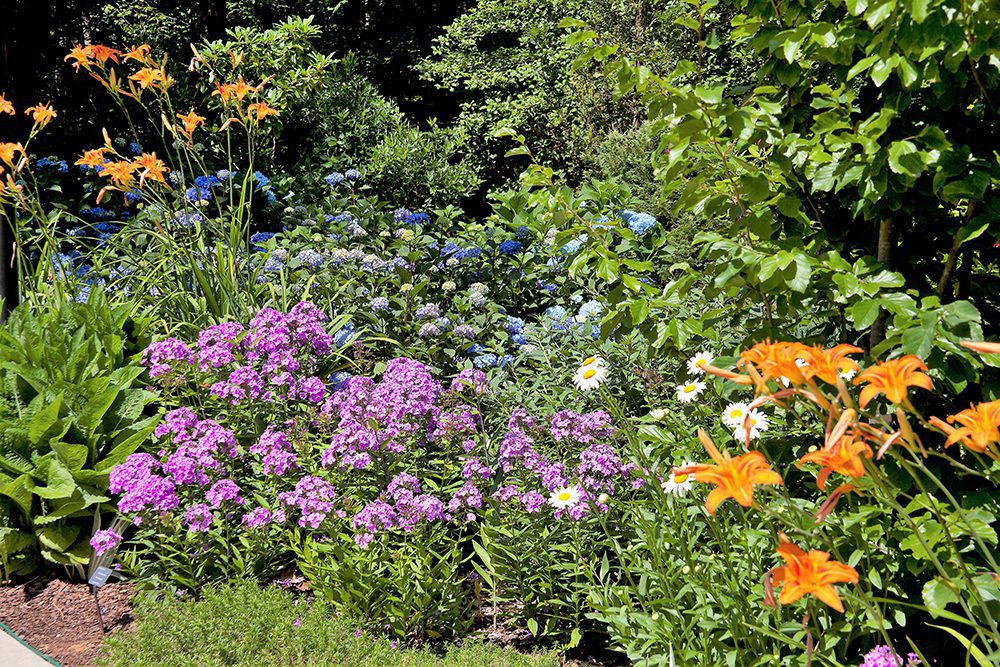
Photo Credit: Larry Griffeth
Nearly 30% of the site’s plant material had been grown in the garden’s nursery prior to the awarding of this project. The gardens boast a diverse plant palate with more than 1300 different varieties.
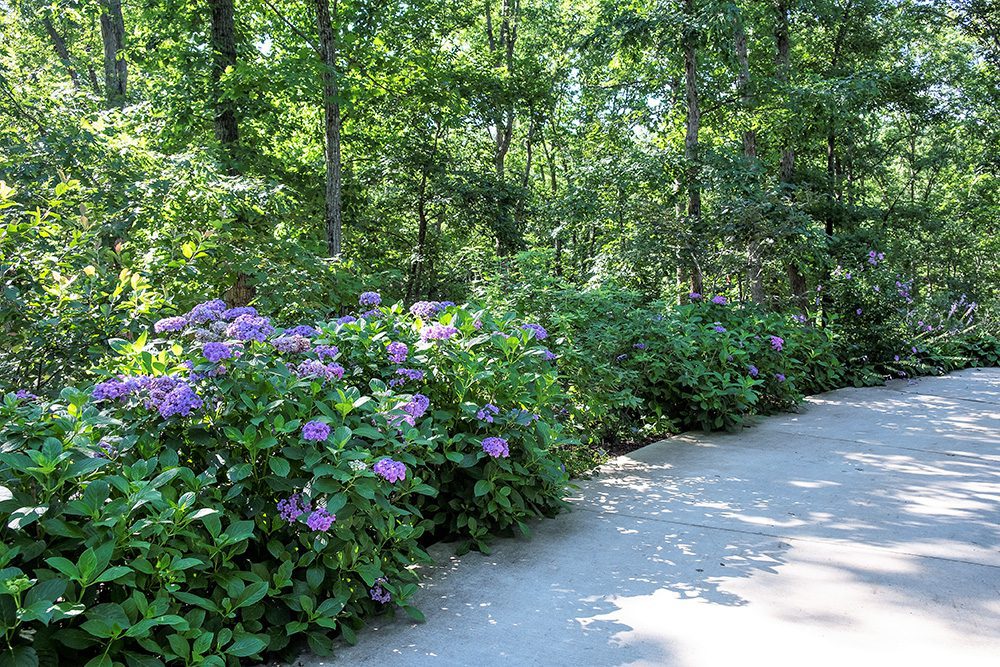
There are 300+ varieties of Hydrangea, 150 Magnolia varieties, 88 unusual varieties of plants; 50 Witch Hazel varieties; and 32 Maple species.
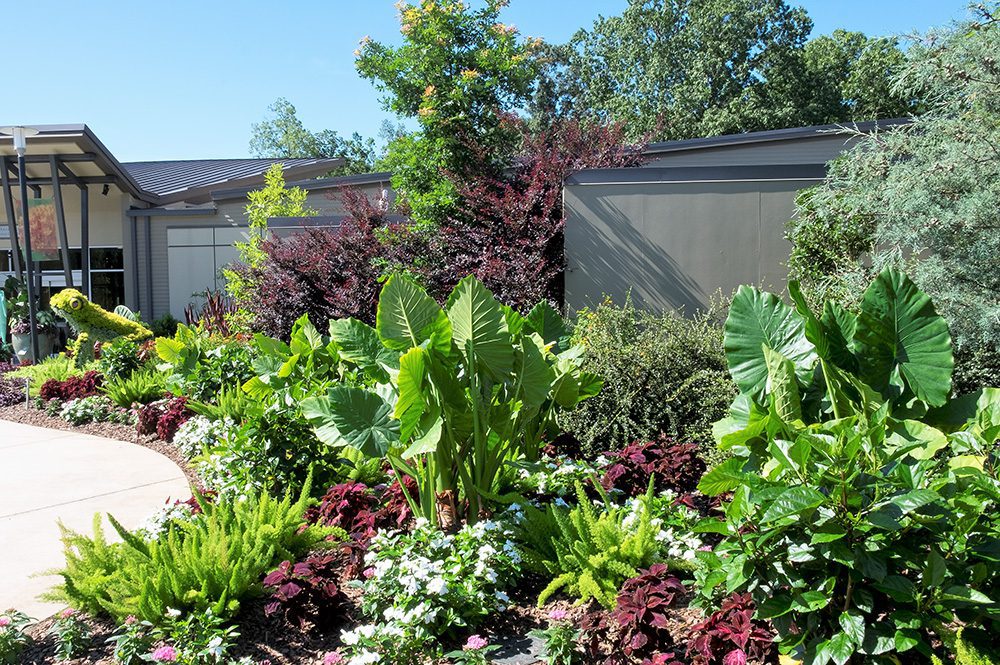
The site’s design and installation was an intricate partnership between garden staff, the designer and the landscape contractor who worked closely together to generate plant lists, develop color sequences and assure four seasons of floricultural display. The designer likened the process to “an improvised painting that lead to an amazing garden.”
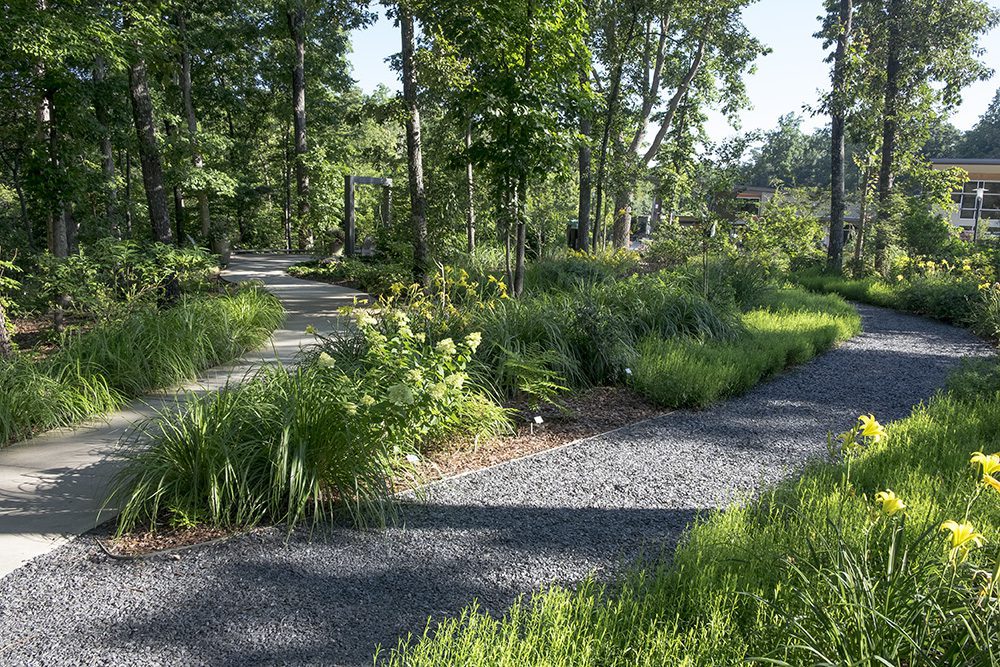
There was a record 63 days of rain prior to the start of the landscape portion of this project, delaying the GC’s installation of roads, buildings and artscape. This, in turn, pushed back the start of our work and reducing the time we had to complete it.
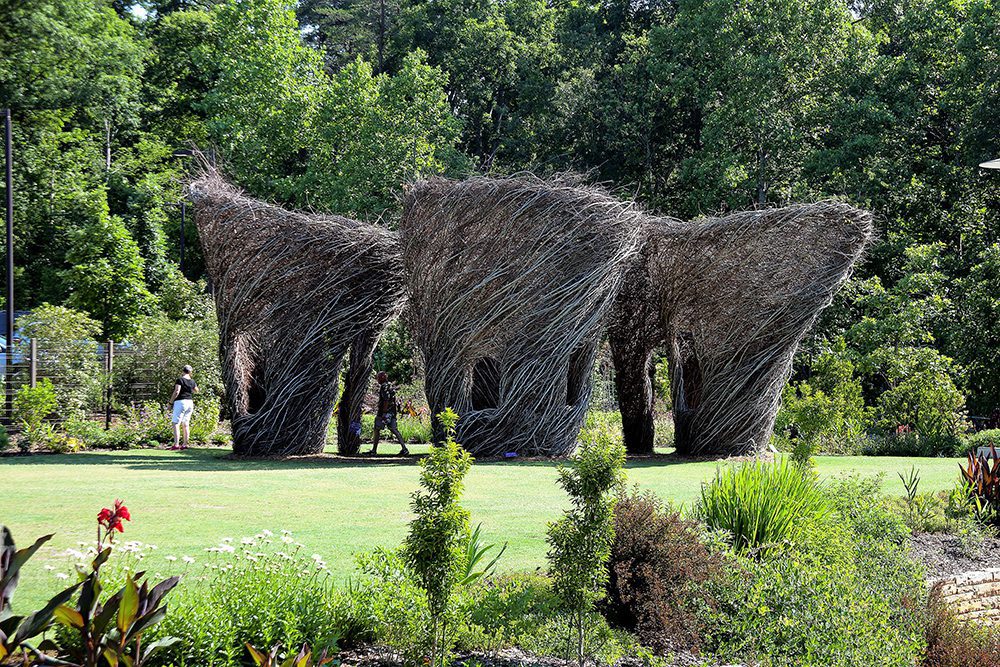
Photo Credit: Larry Griffeth
Keeping with the sustainable principles of the site, artist Patrick Dougherty has created this monumental sculpture for an exhibit known as Woven Whimsy. This art piece was created on site, and is made out of sticks which are organic and will break down over time.
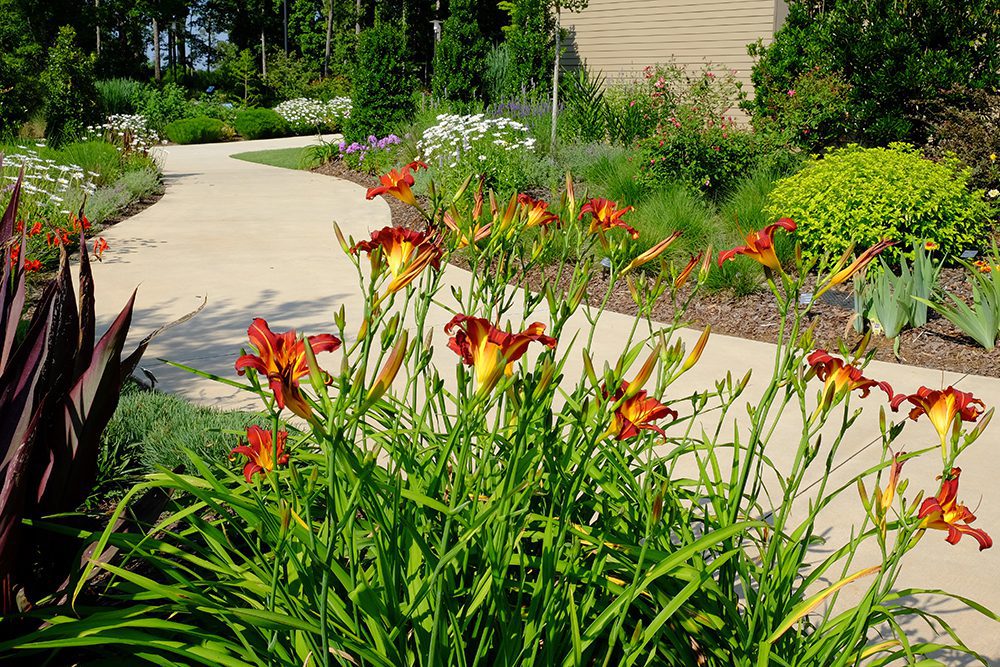
The landscape is comprised of over 20,000 plants and 600 trees. There are nearly 100 different varieties of shrubs, 150 varieties of perennials and grasses, and 39 varieties of trees all helping to enhance this greenspace. Material was ordered/delivered in waves using Just-In-Time delivery, and we set up some temporary irrigation and had a water truck on site for 8 hours a day on every other day of the project.
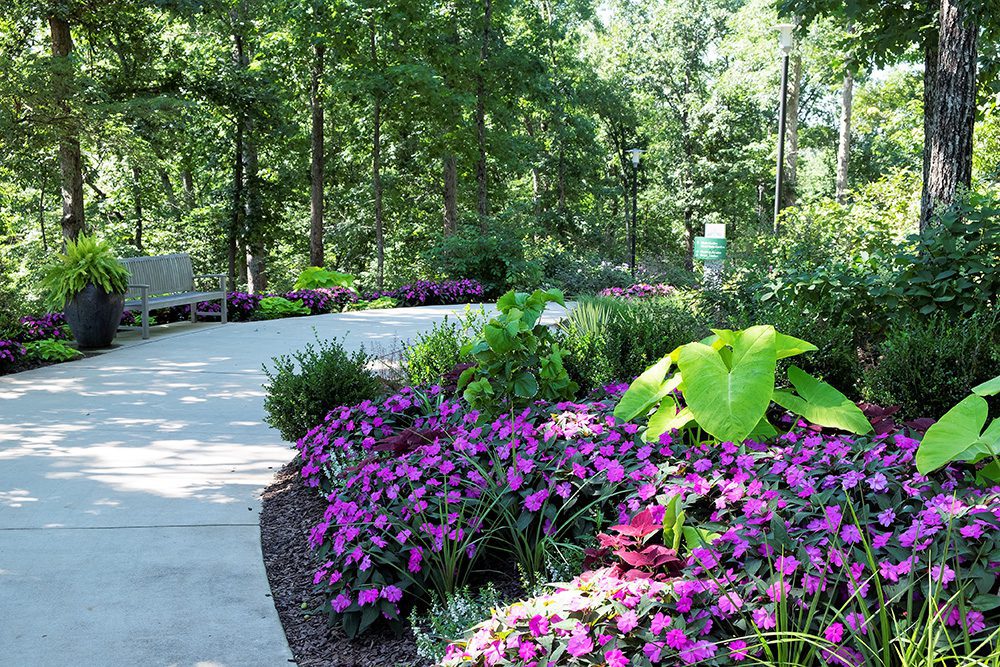
Our project manager on the site described installing a botanical garden as “creating the feel that you’re in a gardener’s back yard but on a commercial scale.” Throughout the site, visitors are encouraged to sit and enjoy the landscape, which looks vastly different depending on the season.
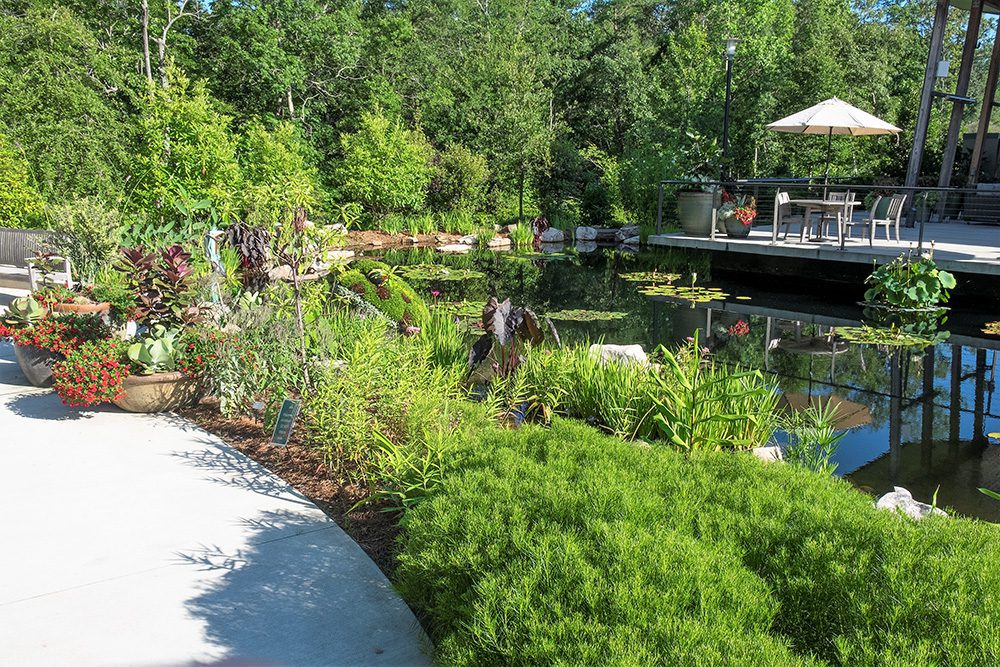
The client was heavily involved with the day-to-day process and required daily meetings and walks throughout the project every day.
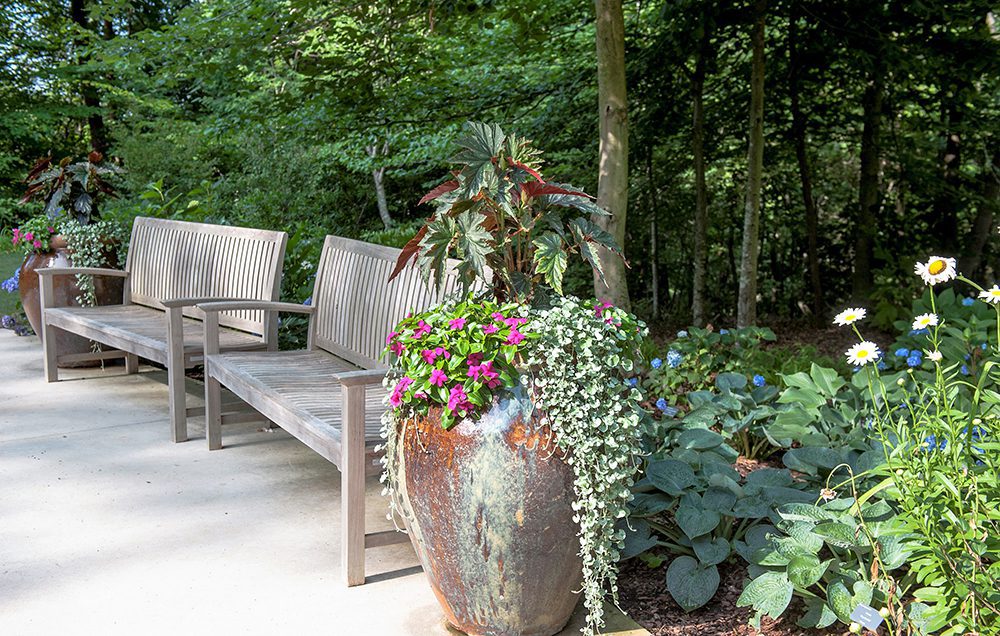
To prevent root and canopy damage of existing trees, an arborist was brought in to consult. Existing trees were carefully limbed up and excavation for all plant material was done by hand. Where 1 ½ – 2” tree roots were encountered, plant holes were moved or smaller plant material chosen to avoid root damage. Due to competition with existing trees for water, newly installed material was closely monitored and spot-watering occurred to ensure root establishment.
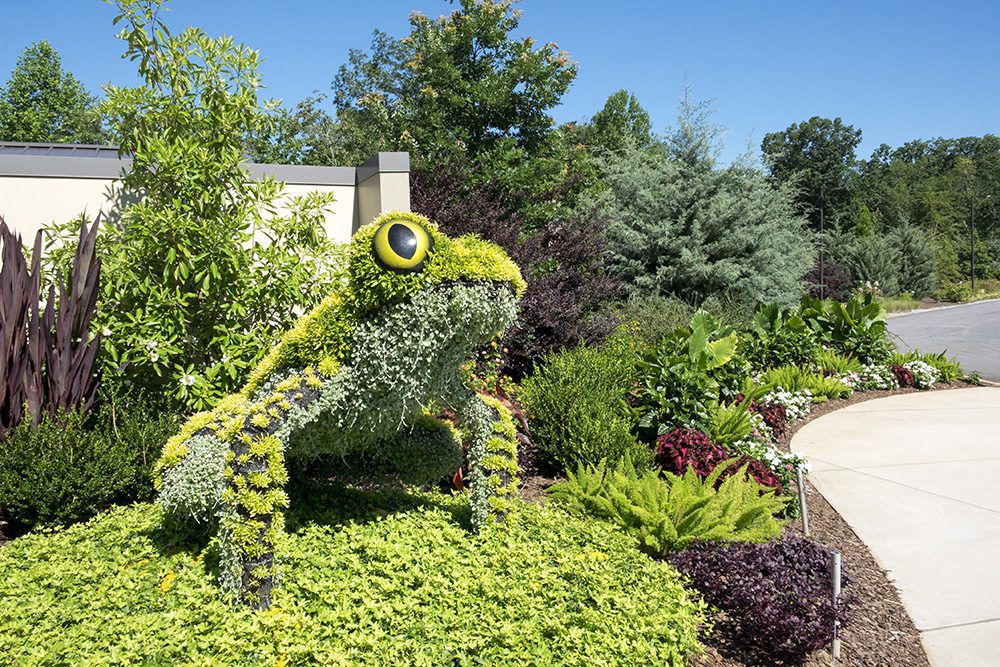
The project’s design, which includes nearly 1300 varieties of plants, and the attention to detail with its installation, will make this a project enjoyed by visitors for many years to come.